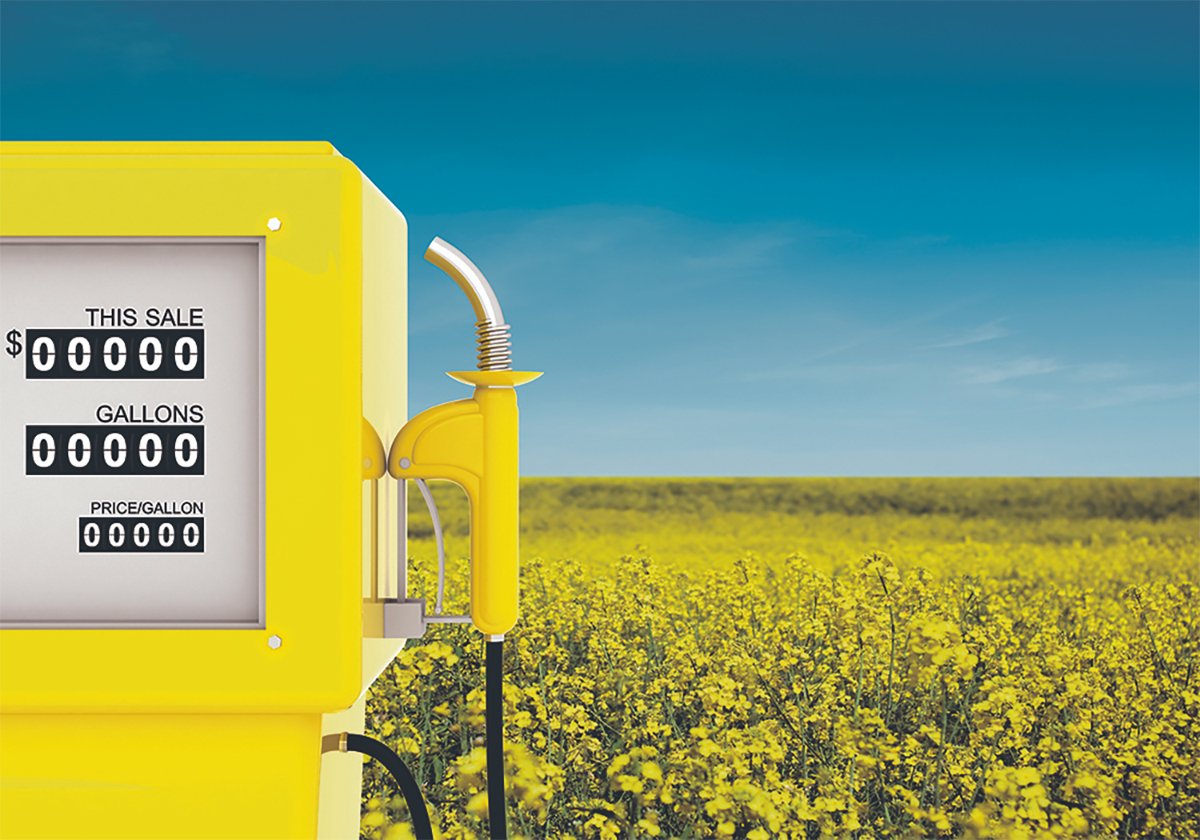Sell the bad, hoard the good | Poor quality grain will only get worse in the bin, says market adviser
Flush the worst out fast and hold tightly onto the best, marketers say about how to deal with the Prairies’ quality-damaged and diverse 2014-15 crop.
The grain industry faces a deluge of crops downgraded to feed. As well, there is much less high quality feed and food grade crops than expected and a plethora of crops that will sit between those extremes.
“If you’re sitting on low-vomitoxin product … you’ll probably do fairly well this year,” James Calloway of Johnston’s Grain in Welwyn, Sask., said about high quality feed grain.
Read Also

Biofuel sector happy with federal budget
Advanced Biofuels Canada says new Biofuel Production Incentive is a lifeline until CFR amendments are in place.
“There are going to be some bright sides, but a lot of hardships too.”
On the opposite side of the feed grain spectrum is a wet, diseased and damaged crop that isn’t likely to get any better sitting in the bin, said Jim Beusekom of Market Place Commodities in Lethbridge.
“The guys that sell early, if it gets downgraded to feed spec, are probably going to do better than the guys who store it and try to market it through the winter months,” said Beusekom, who expects low quality feed grain prices to stay flat or slide.
“If there is a huge amount of feed, the market will not pay you to store it.”
Wet weather stymied harvest in late August and the first half of September, putting most farmers weeks behind where they expected to be and leaving crops exposed to disease, staining and other wet weather dangers.
Many farmers who are now able to combine are harvesting crops with high moisture levels just to get them off the field in case more bad weather arrives.
Most farmers don’t really know what they have, with damage likely but not yet proven.
Brenda Tjaden Lepp of FarmLink Marketing said the uncertainty also plagues grain companies, which is why she’s cautioning her clients against selling and pricing everything now, regardless of the likelihood of feed grain prices falling further as the crop is harvested.
“Everyone’s looking at the same situation without knowing what their strategy is going to be,” said Tjaden Lepp.
“You know what they do when they don’t know what something’s going to look like? They put a risk premium in their price. We’re telling our clients this would be a very bad time to commit any wheat of any variety under a contract.”
She said farmers with good quality crops will probably benefit from giving the grain industry time to see what is actually harvested and find markets for all the different grades.
Grain companies did fine last year, in the first year following the demise of the CWB monopoly, but that was with a quality crop. This year they must cope with a much more diverse range of crop qualities and quantities without CWB’s blending and co-ordinating abilities.
If grain companies discover they can move middle quality grades well, they might become more aggressive for crops that they really don’t want to handle at the moment.
“Wheat that gets graded a 4 or 5 two weeks from now, if you take the same samples around six months from now you’re likely to see better grades,” she said.
“They might be able to figure out a way to make it a 3 or 2.”
Tjaden Lepp said it’s obvious that there is a lot of crop damage, but a surprising number of good quality crops are still coming in, even from problem-ravaged areas such as southwestern Manitoba.
Calloway said the best marketing play this year can be employed by farmers with easy-to-access, all-weather storage and good quality feed grain, milling and export crops. There won’t be much left by the end of winter.
“Guys that have good accessible yards year-round and good product, hold that stuff till March or April or May when nobody wants to load and yards are bad,” said Calloway.
“Bring that low-vomi feed into the market right then, when you can load and nobody else can. You just earned yourself a dime.”
That’s what Tjaden Lepp is telling her clients with milling quality cereal grain.
“If it’s a 1 or 2 CWRS or durum, you just put it in the bin and lock the door and don’t talk to grain buyers for a while,” she said. “Nobody knows right now and everyone fears the worst, and that makes it a very bad time to sign forward contracts.”















